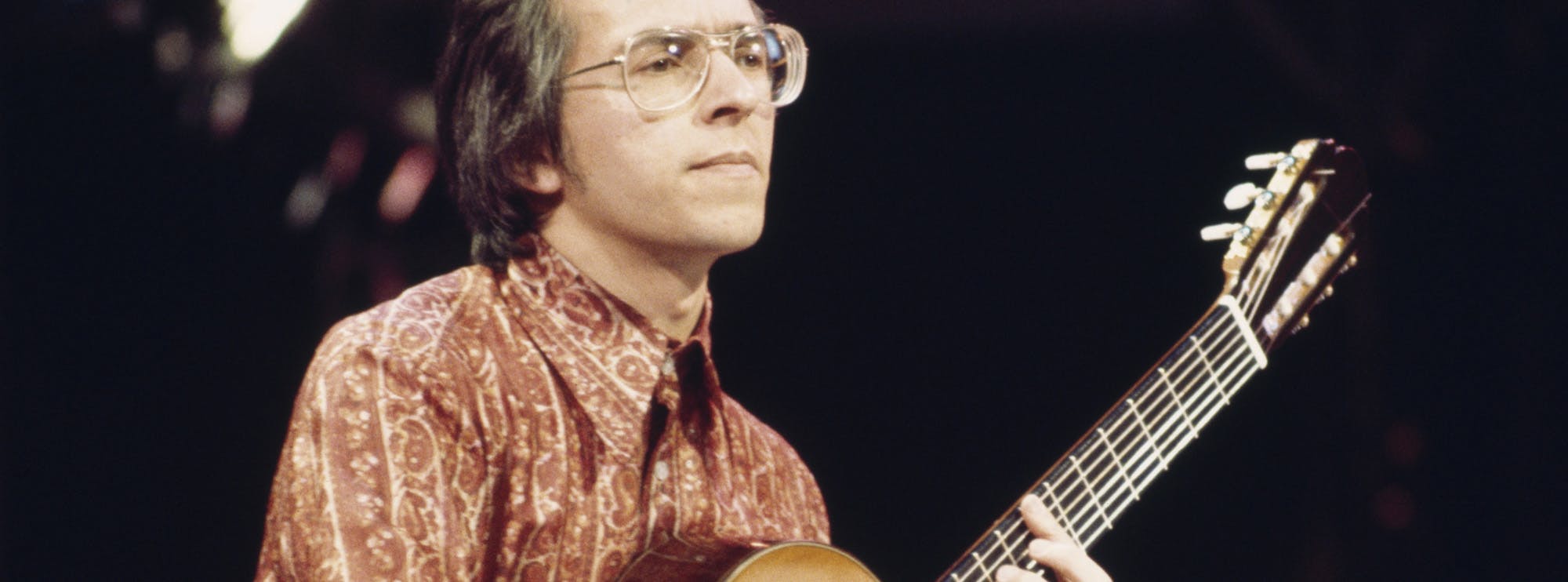Improvise Without Fear by Richard Shaw
Improvise Without Fear by Richard Shaw is a carefully designed guitar lesson course that focuses on teaching players how to confidently approach improvisation. Whether you're an experienced player or someone just stepping into the world of lead guitar, this course offers valuable insights into the methods and concepts that will allow you to create spontaneous, expressive, and fluid solos. With Richard Shaw's guidance, you'll learn to break free from over-reliance on scales and technical exercises, discovering a more instinctive and creative approach to playing.
About Richard Shaw
Richard Shaw, the lead guitarist for Cradle of Filth, is well-known for his technical proficiency and musical versatility. Shaw has cultivated a playing style that incorporates influences from classical music, blues, and metal, resulting in an incredibly dynamic and emotive approach to guitar playing. His improvisational style reflects a balance between technical skill and emotional expression, making him an ideal instructor for guitarists seeking to broaden their improvisational horizons. Shaw’s teaching draws from the work of iconic guitarists such as David Gilmour, Steve Vai, and Dimebag Darrell, blending their influence into a comprehensive method that will help you master improvisation.
Key Concepts for Improvisation
1. Developing Phrasing
Phrasing is the backbone of any great solo. In Improvise Without Fear, Richard Shaw emphasises the importance of creating musical phrases that tell a story. Instead of playing long strings of notes, Shaw encourages players to think of each note as part of a larger narrative. By focusing on phrasing, you’ll learn how to make your solos more expressive and relatable to listeners, similar to how a vocalist might deliver a melody. This concept allows you to break free from playing mechanically and lets you play more musically.
2. Melodic Development
Improvisation isn't just about fast playing or shredding—it’s also about creating memorable melodies on the spot. Shaw teaches you how to craft melodic lines during your solos, focusing on how to build and resolve tension through careful note choices. By understanding how melodies work, you'll be able to create improvisations that not only flow naturally but also connect emotionally with the listener.
3. Dynamics and Expression
One of the core concepts in Improvise Without Fear is the use of dynamics—altering the volume and intensity of your playing to add emotional depth. Shaw explains how to incorporate crescendos, decrescendos, and changes in intensity to make your improvisations more engaging. By mastering dynamics, you’ll be able to communicate a wider range of emotions through your playing, from subtle nuances to explosive bursts of energy.
4. Rhythmic Variation
Improvisation isn't just about which notes you play, but when you play them. Shaw covers the importance of rhythmic variation, showing how changing up your rhythms can dramatically improve your improvisational solos. This concept includes syncopation, note spacing, and the use of rests. By experimenting with rhythm, you can create solos that are more unpredictable and exciting, keeping listeners on their toes.
5. Motif Development
A key aspect of Shaw’s teaching is learning how to develop motifs—short, repeating musical ideas that can be varied throughout your solo. This concept is essential in making your improvisation coherent and structured. Shaw demonstrates how to create and evolve motifs, so your solos feel connected, even when you're improvising. The ability to repeat and transform small ideas will make your solos more memorable and will help you avoid falling into repetitive patterns.
6. Interaction with Chord Progressions
Understanding how to improvise over chord progressions is vital for creating dynamic and harmonically rich solos. Shaw explains how to use the underlying chord progression as a roadmap for your improvisation, allowing you to select notes that complement the harmony of the song. By being mindful of the chords, you can create improvisations that blend seamlessly with the rest of the music, rather than clashing or sounding disjointed.
7. Emotional Expression through Improvisation
Improvisation is an extension of personal expression. One of the core teachings in Improvise Without Fear is learning how to channel your emotions into your playing. Shaw explores the psychological aspect of improvisation, encouraging players to play from the heart, using techniques that tap into their emotional state. Whether you’re aiming for aggression, melancholy, or joy, Shaw helps you understand how to translate those feelings into the notes you play.
8. Spontaneity and Risk-Taking
The essence of improvisation lies in spontaneity and being willing to take risks. Shaw teaches you how to embrace mistakes and turn them into opportunities for creative expression. By encouraging an experimental mindset, Shaw helps you learn to navigate unplanned moments in your solo with confidence. This approach fosters a sense of freedom and creativity, enabling you to step outside of your comfort zone and discover new musical possibilities in the moment.
9. Building Confidence in Improvisation
One of the most important aspects of this course is helping players build confidence in their improvisational abilities. Shaw’s structured approach gradually builds your skills, starting with simpler ideas and moving into more complex techniques. By focusing on the mindset behind improvisation and reinforcing the idea that there’s no "wrong" way to improvise, Shaw gives players the confidence they need to experiment freely, without fear of failure.
10. Interaction with the Band
Improvisation doesn’t happen in a vacuum. Shaw teaches the importance of interacting with the other musicians in the band during improvisation. This involves listening carefully to what others are playing and responding in a way that complements their parts. Whether it’s locking into the rhythm section or accentuating melodies in the harmony, this concept will help you become a more collaborative and adaptive improviser.
Guitar Players and Influences
Richard Shaw’s improvisational style is influenced by some of the greatest guitarists across various genres. Players like David Gilmour of Pink Floyd have left a lasting impression on Shaw’s approach, particularly in terms of phrasing and emotional expression. Gilmour’s ability to say so much with just a few notes is a key component of Shaw’s teaching on how to construct meaningful solos.
Metal legends like Dimebag Darrell have also shaped Shaw’s approach to improvisation, especially in the context of dynamic changes and aggressive playing. Steve Vai, known for his fusion of technical prowess with creative improvisation, has similarly influenced Shaw’s ability to blend technical elements with raw musicality. These influences combine to provide students with a well-rounded foundation for exploring improvisation in various musical styles.
Key Improvisational Concepts Covered in Improvise Without Fear
- Phrasing: Crafting musical statements that flow naturally.
- Melodic Development: Creating memorable, singable lines during solos.
- Dynamics: Using volume and intensity to convey emotion.
- Rhythmic Variation: Incorporating different rhythms to add excitement.
- Motif Development: Using repeating musical ideas to create structure.
- Chord Interaction: Soloing in harmony with underlying chords.
- Emotional Expression: Translating feelings into your playing.
- Spontaneity and Risk-Taking: Embracing unplanned moments and experimentation.
- Confidence Building: Gaining the assurance to improvise without hesitation.
- Band Interaction: Collaborating musically with other players during improvisation.
About The Tutor
Tutor Profile
Rich Shaw
Richard is most well known as the guitarist and co-songwriter for UK metal band, Cradle of Filth, from 2014 until 2022. In his time with the band, he co-wrote and performed on the albums ‘Hammer of the Witches’ (2015), ‘Cryptoriana - The Seductiveness of Decay’ (2017), and ‘Existence is Futile’...



